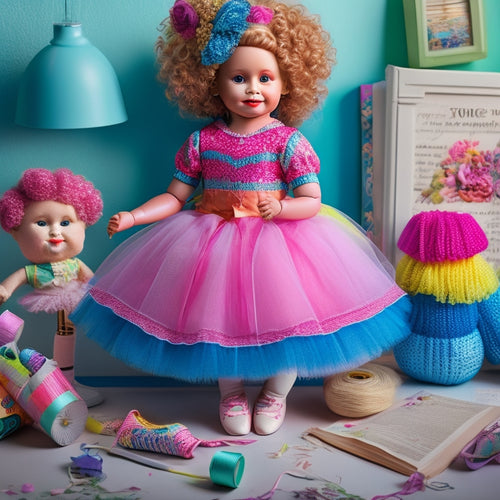
Diverse Dance Forms Unveiled: A Cultural Journey
Share
Diverse dance forms have evolved as vibrant expressions of human experience, weaving together cultural heritage, historical context, and artistic innovation to convey emotions, values, and stories. Each dance form is a unique thread of human expression, shaped by cultural heritage and historical context. From traditional styles to modern fusions, dance serves as a universal language, transcending linguistic and geographical boundaries. As we commence on this cultural journey, we uncover the rich tapestry of rhythmic narratives, artistic expression, and community bonding. As we peel back the layers, we discover the depth and complexity of these dance forms, echoing the heartbeat of humanity.
Key Takeaways
• Diverse dance forms, such as Gumboot Dance and Capoeira, embody rhythmic storytelling, conveying cultural heritage and historical context through movement.
• Each dance style and technique, like Modern Dance, is a unique thread in human expression, shaped by cultural heritage, historical context, and artistic innovation.
• Dance forms preserve traditional storytelling, fostering community bonding, self-expression, and a sense of identity, as seen in Gumboot Dance and Capoeira.
• Artistic innovation and creativity drive the evolution of dance, blending traditional and contemporary elements, and reflecting the complexities of human experience and emotions.
• Embracing diverse dance forms celebrates human experience and cultural expression, providing a platform for self-expression, individuality, and a shared sense of purpose.
Roots of Rhythm and Movement
In the domain of dance, the rhythmic pulse of human experience beats strongest in the grassroots traditions that have shaped the evolution of diverse dance forms. The convergence of cultural heritage, historical context, and artistic expression has given rise to a rich tapestry of movement and meaning.
African influences have played a significant role in shaping the rhythmic essence of various dance forms. For instance, Gumboot Dance, originating in South African mining communities, incorporates rhythmic stomping and slapping of boots, while Capoeira, an Afro-Brazilian martial art, blends acrobatics, music, and dance. These dance forms embody rhythmic storytelling, where the body becomes an instrument, conveying emotions, cultural heritage, and historical context.
Through these grassroots traditions, we witness the power of dance as a universal language, transcending boundaries and celebrating human experience.
Diverse Styles and Techniques
As we explore the world of diverse dance forms, it becomes apparent that each style and technique is a unique thread in the rich tapestry of human expression, woven from the intricate patterns of cultural heritage, historical context, and artistic innovation.
The diverse styles and techniques of dance forms reflect the complexities of human experience, with global fusion giving rise to new and dynamic expressions. The contrast between traditional and contemporary forms highlights the evolution of dance as an art form.
-
Gumboot Dance's rhythmic stomping and slapping of boots echoes the struggles of mining communities.
-
Capoeira's blend of acrobatics, music, and dance reflects the resilience of Afro-Brazilian culture.
-
Modern Dance's emphasis on self-expression and emotion paved the way for contemporary fusion styles.
Cultural Significance and Expression
Through their distinctive movements and rhythms, dance forms serve as powerful vessels for cultural expression, conveying the values, traditions, and experiences of diverse communities. They often embody traditional storytelling, preserving historical narratives and cultural heritage.
For instance, Gumboot Dance, originating from South African mining communities, incorporates rhythmic stomping and slapping of boots, conveying the struggles and resilience of the miners. Similarly, Capoeira, an Afro-Brazilian martial art, blends elements of acrobatics, music, and dance, showcasing the creativity and resistance of enslaved Africans.
These dance forms not only facilitate community bonding but also provide a platform for self-expression, fostering a sense of identity and belonging. By embracing these diverse dance forms, we celebrate the richness of human experience and the power of cultural expression.
Frequently Asked Questions
Can I Learn These Dance Forms Without Prior Experience?
"The only way to do great work is to love what you do." With no prior experience, you can still master diverse dance forms through online classes, personalized coaching, and flexible scheduling, which cater to your learning curve with beginner lessons, practice routines, and skill-building exercises.
What Is the Relationship Between Dance and Social Justice?
Through dance, individuals can harness Activism as a powerful means of Expression, leveraging the art form as a Platform for Empowerment, where marginalized voices can rise, sparking social change and fostering a culture of inclusivity and equality.
How Do Dance Forms Evolve Over Time and Geography?
As dance forms traverse time and geography, they undergo artistic adaptation, assimilating local influences and cultural nuances, resulting in geographic fusion, where traditional techniques blend with new aesthetics, giving rise to innovative expressions that reflect the dynamic interplay between heritage and innovation.
Can I Incorporate Dance Into My Fitness Routine?
"Who needs boring treadmills when you can shimmy your way to fitness? Incorporating dance into your workout routine can be a fun, liberating experience. Explore various dance styles to find the perfect fusion of fitness goals, workout routines, and exercise plans that bring joy and excitement to your daily routine."
Are There Any Cultural or Historical Sensitivities to Be Aware Of?
When engaging with diverse dance forms, it is crucial to acknowledge cultural appropriation and respect traditional ownership, ensuring that cultural exchange is fair, respectful, and mutually beneficial, rather than exploitative or colonial.
Related Posts
-

5 Essential Tips for Dance Makeup Artists Online
As a dance makeup artist, you know having a strong online presence is key to success. You need a professional website...
-

What Makes a Stunning Lyrical Dance Makeup Look?
You craft a stunning lyrical dance makeup look by balancing ethereal, emotive essence with subtle, shimmering accents...
-

Exciting 'Dancer Doll' Sewing Pattern Released
The Dancer Doll sewing pattern is now available, offering a detailed guide to crafting a beautifully detailed doll. T...


